1987 saw the start of something huge, though no one knew it at the time. Capcom’s Street Fighter seemed like just another arcade game. Nice graphics, sure, but no one could have guessed that just four years later, its sequel would spark a revolution that transformed arcades as we knew them. Suddenly everyone and their sister was beelining for the nearest Street Fighter II cabinet, jostling to put their quarters on the line to face off with strangers in a new form of combat.
Now, over 30 years later, Street Fighter remains the most respected franchise in fighting games. We love ‘em, you love ‘em, and today we’re going to assess them all to sort the best from the worst, reminisce over Street Fighter’s rich legacy, and remind you that you really, really ought to play some Su…wait, sorry. Getting ahead of ourselves.
Games will be judged on historical importance, but more so on gameplay, aesthetics, continued relevance, and how fun (or not) they are to play today.
We set two ground rules to keep this from getting unwieldy. One: “Street Fighter” must be in the title (we only made one exception). Two: no Marvel or versus games. They’re a whole other gameplay universe unto themselves and would have made this endeavour twice as lengthy. And it’d be pretty nonsensical to try and assess Marvel Super Heroes or Tatsunoko alongside, say, Street Fighter 6.
In any case, the ranking we arrived at is not beyond reproach and is far from scientific…but it is correct. Here we go!
24. Capcom Fighting Evolution (2004)
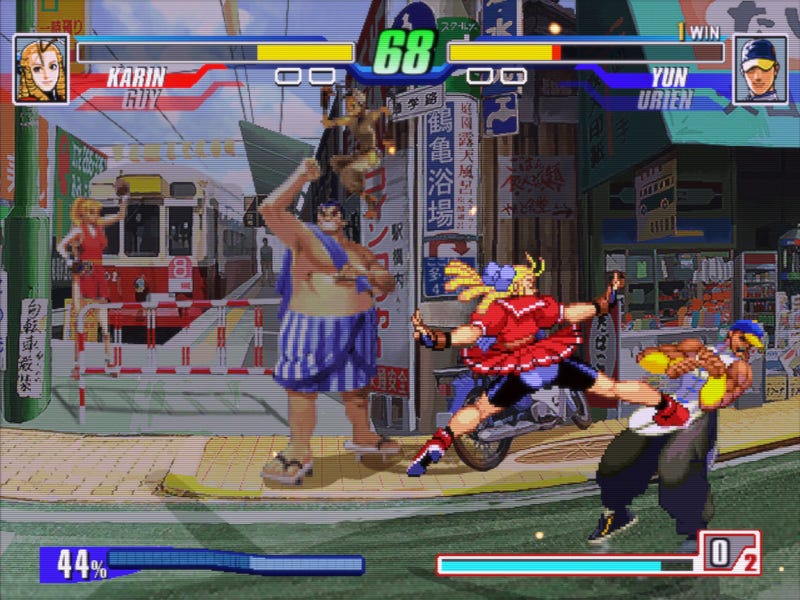
By 2004 the fighting game dark ages were upon us, and Capcom reached its absolute nadir with Capcom Fighting Evolution. The only surviving offshoot of the cancelled 3D project Capcom Fighting Jam, Evolution was an undercooked, misbegotten, content-starved misfire that did more harm than good.
Like 2001’s more successful Capcom vs. SNK 2, Evolution sought to combine characters from numerous Capcom franchises into one big battle royale. But Evolution’s characters were locked into the fighting styles of their original games, resulting in weird matches between incongruent game systems with none of the flexibility of CvS2’s grooves or Alpha 3’s “-ism” styles. And with only 23 characters drawn from five games (13 being from Street Fighter), more fan faves were left out than included.
Gosh, was it hideous. Recycled low-res sprites from five unrelated games combined with a few new ones plus cheap-looking, high-res backgrounds made the notably saggy visuals of 2000’s Marvel vs. Capcom 2 look like a reasonable effort in comparison.
Capcom Fighting Evolution failed to reverse Capcom’s fading fighting fortunes, so fans would suffer through another four or so years of fighting game purgatory before Street Fighter IV finally set the stage for the genre’s gradual resurgence. — Alexandra Hall
23. Street Fighter: The Movie (console, 1995)
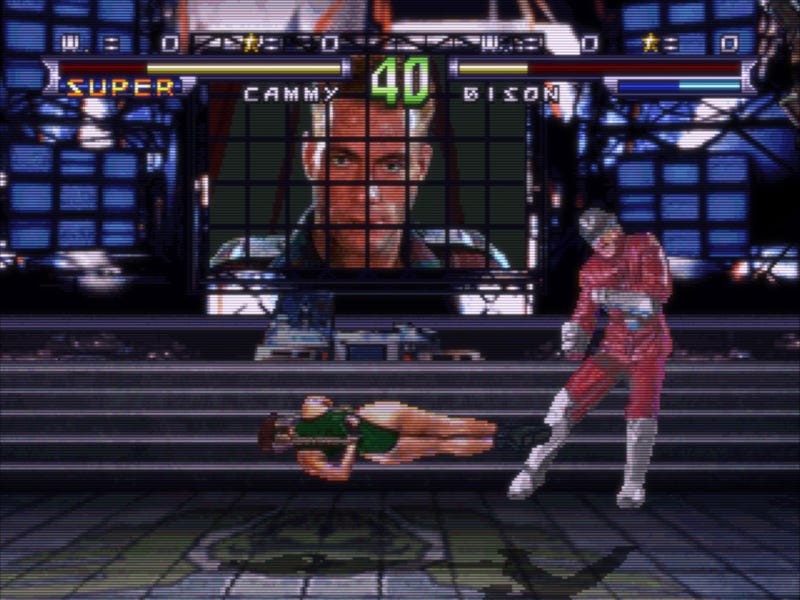
1994’s so-bad-it’s-classic Street Fighter movie actually spawned two completely different fighting games. Incredible Technologies’ arcade game was a legendary mess more akin to Mortal Kombat, but I’d always heard Capcom’s PlayStation and Saturn home version was more like Super Street Fighter II Turbo, only with homely, digitized sprites of Jean Claude Van Damme and co. Sounded like a fun lark!
In fact, saying Street Fighter: The Movie “plays like Super Turbo” is kinda like saying legendary Famicom pirate knock-off Somari “plays like Sonic the Hedgehog”: superficially true, but overlooking a lot of fuckin’ details. Yeah, you got your basic six-button Super Turbo action here, but running like molasses and ugly as sin thanks to the choppily animated digitized characters.
There’s definitely a car accident factor in that it’s fun to mess around with Street Fighter: The Movie while wondering what Capcom was thinking. The game’s not a complete Way of the Warrior-esque digitized misfire, but a quick session or two will be plenty to assuage most people’s curiosity. — Alexandra Hall
22. Street Fighter (1987)

There’s no denying that 1987’s Street Fighter is a historically important pitstop between Data East’s seminal 1984 Karate Champ and Capcom’s industry-disrupting 1991 smash Street Fighter II: The World Warrior. There’s also no denying it’s a bad-playing, frustrating game that offers little enjoyment to a modern player.
It certainly made some contributions to the genre, though. Designed by Takashi Nishiyama several years after he created Irem’s influential Kung-Fu Master (and several years before he jumped ship to Capcom rival SNK), Street Fighter pushed the nascent versus fighting genre forward by adding a large cast of beautiful, relatively charismatic characters, multiple unique input schemes, and the exciting concept of hidden but powerful “special moves” activated via secret joystick inputs.
The ambition was there! It just feels terrible to play. Ryu and Ken (identical except in looks) are the only playable characters, movement is painfully hobbled, enemy attacks are unpredictable, and the CPU can kill you in seconds. Then again, you can destroy the CPU (or another player) in seconds too if you figure out the knack of mashing out the ultra-powerful but incredibly picky fireballs and dragon punches. Spam those quarter-circles!
Ultimately the first Street Fighter is just a curiosity, albeit a historically notable one. If its 1991 sequel hadn’t embodied the most incredible glow-up in video gaming history this first game would be largely forgotten today. — Alexandra Hall
21. Street Fighter: The Movie (arcade, 1995)

So wait, this digitized disaster of an arcade game based on the damn Van Damme flick somehow ranks above the very first Street Fighter? Well, yeah. Because while it’s certainly a mess, it’s actually fun to play, which people have been picking up on in recent years.
Make no mistake, Incredible Technologies’ Street Fighter: The Movie is a kusoge through and through, a low-tier fighting game enjoyed mainly for its strangeness and jank. But such strangeness, such jank! This thing played like some mutant combination of Mortal Kombat and Street Fighter, and was far more open to juggling and other combo bullshit than either. Anything goes here—it’s full of infinites, incidentally—so why not juggle them with four dragon punches or spam flash kicks like they’re nearly safe on block (I think they are?). Incidentally, this is the first Street Fighter game in which characters had more than one super move.
While it’s gaudy as hell, Street Fighter: The Movie le arcade also has a lot more colors and like three times the animation frames of Capcom’s more staid home adaptation of the film, making it nicer to watch, too. Good game? Not really! But it’s just the ticket if you wanna zone out to some wack-ass, alt-universe Street Fighter madness. — Alexandra Hall
20. Super Street Fighter II Turbo HD Remix (2008)

Super Street Fighter II Turbo had been 2D fighting’s competitive gold standard since 1994, so I was super intrigued to learn that tournament pro David Sirlin was delving into the 14-year-old game’s guts to not only try to address its balance shortcomings, but add new HD graphics by comic company Udon, too. I followed his blog updates religiously, marveling at the notion of a Super Turbo in which Cammy wasn’t trash, or—dare to dream—T. Hawk could be middle-tier.
The game came out…but only in America, and not in Japan. And while the community gave it a little play at a few EVOs, it just didn’t catch on.
HD Remix was indeed a very, very different game, with wild changes like E.Honda’s jab headbutt nullifying fireballs, Ryu getting a fake fireball, and Zangief’s throw commands being 180s instead of 360s. In fact, input execution got simplified across the board. That’s arguably a reasonable response to Super Turbo’s strictness (some of it arising from bugs), but HD Remix probably goes too far in the other direction, shaving off a key aspect of the venerable game.
And hindsight being 20/20, let’s be real: The new HD graphics were largely pretty ugly. Unfortunately, the only way to play with all the new balance changes was to use the HD sprites, because the game reverted to normal Super Turbo when using the old graphics. They really, really wanted everyone to see Cammy’s freaky new Q-Bee eyes.
Anyway, America didn’t love it and Japan never even got it, so everyone just went back to OG Super Turbo. Thus I learned that even if you build it, the FGC won’t always come. This leaves Super Street Fighter II Turbo HD Remix a fascinating cultural artifact, but not much of a game to go back to with any regularity. — Alexandra Hall
19. Ultra Street Fighter II: The Final Challengers (2017)
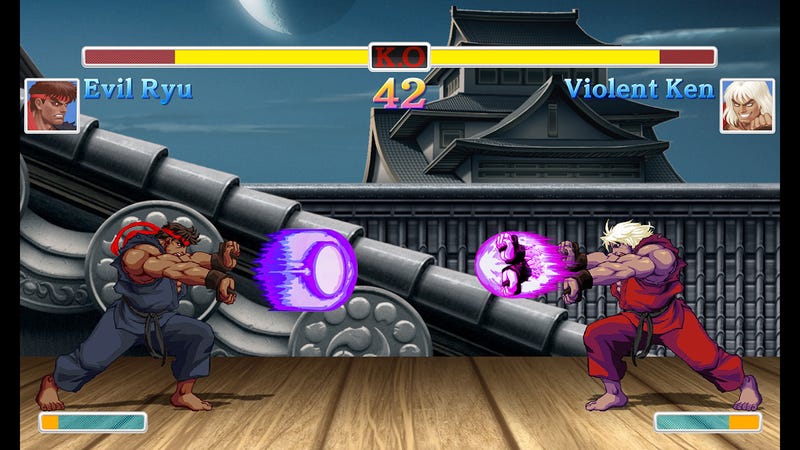
As of this writing Ultra is the newest version of Street Fighter II, and to call it a mixed bag is an understatement. Don’t get me wrong, Street Fighter II is always a good game. But there are better versions and worse versions, ones you want to play and ones you want to skip. This one’s a skip.
Exclusive to the Nintendo Switch, Ultra took the (ugly, in my opinion) redrawn graphics of Super Street Fighter II Turbo HD Remix, tossed out that game’s radical balance changes, and implemented its own more modest slate, such as “grapple breaks” (replacing throw softening) and some more minor character tweaks. It also added three new boss-ish characters in Violent Ken, Evil Ryu, and Shin Akuma.
If you asked the Super Street Fighter II Turbo community what updates they might enjoy to their cherished classic, adding more overpowered Akuma-like characters certainly wouldn’t rank, much less when implemented via cheap palette swaps. Nor would omitting the “old” Super Street Fighter II versions of each character—essentially halving the playable fighter count, despite Ultra adding the three “new” ones.
And consider the controller issue: No one wants to play Street Fighter on lousy Joy-Cons, and who’s going to shell out for a quality fighting controller for the Switch of all systems? (I guess you could get an adapter…) The online play’s okay, but it’s funny to consider that this being the Switch, almost every player will be online via the FGC’s most-feared bogeyman: a Wi-Fi connection. It’s just another non-optimal detail in a game teeming with them.
For these reasons and others, the Super Turbo community has not embraced Ultra Street Fighter II. It gave Capcom something to sell during the heady days of the Switch’s launch (for a much-criticized price of $40, no less), but it’s little more than a curiosity today. Credit where it’s due, though: That’s one epic-sounding title. — Alexandra Hall
18. Super Street Fighter II: The New Challengers (1993)
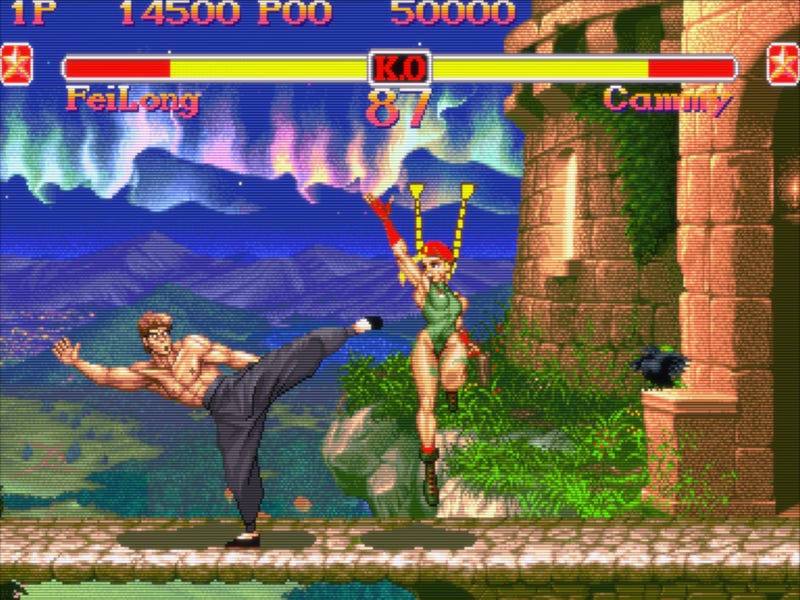
By 1993 Street Fighter II had completely reshaped the arcade business, and Capcom needed to sustain the momentum of its unexpected phenom. Solution? Port the game to its new, pirate-proof CP System II hardware (CPS-2), add four new characters and some spiffy new art, completely redo the audio, give each character a whopping eight colorways, and bolt on a prefix.
Street Fighter II is great, so why do we rank Super relatively low here? Because this particular edition was a disappointment at the time, and no one plays it seriously today. Back in 1993, the new characters were welcome, but the return to pokey, pre-Hyper Fighting gameplay speeds was widely regarded as a downgrade.
What’s more, Capcom obsoleted Super barely five months later by releasing Super Street Fighter II Turbo, which restored the accelerated game speed and made many other positive changes that helped cement that edition, and not plain old Super, as the definitive version of Street Fighter II.
That all being the case, it’s interesting to go back to Super these days to notice all the ways it differed from both its superior follow-up and its CP System (CPS-1) predecessors. On the tech front, CPS-2’s most noticeable difference came in its audio, using proprietary algorithms from QSound Labs to create a more “spacious” soundscape. However, some players prefer the musical arrangements and much bassier sounds of the older CPS-1 games, and just about everyone agrees that Guile’s new voice was…a strange choice. — Alexandra Hall
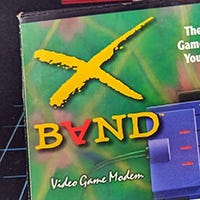
Please, anything but Super…
It was a bummer that Capcom decided to port The New Challengers to SNES and Genesis instead of Super Turbo; the latter hit arcades three months before the 16-bit ports of Super landed, making Super yesterday’s news before it even came home. Thus would begin an over three-year wait for a credible console port of Super Turbo, because the lone 3DO conversion wasn’t it.
And apparently Capcom USA overestimated 16-bit demand, as it suffered serious losses from having to buy back unsold Super carts later in 1994. One neat tidbit, though: The 16-bit ports of Super Street Fighter II were the first games in the series to have online play, thanks to the modem-powered XBAND service.
17. Street Fighter Alpha: Warriors’ Dreams (1995)
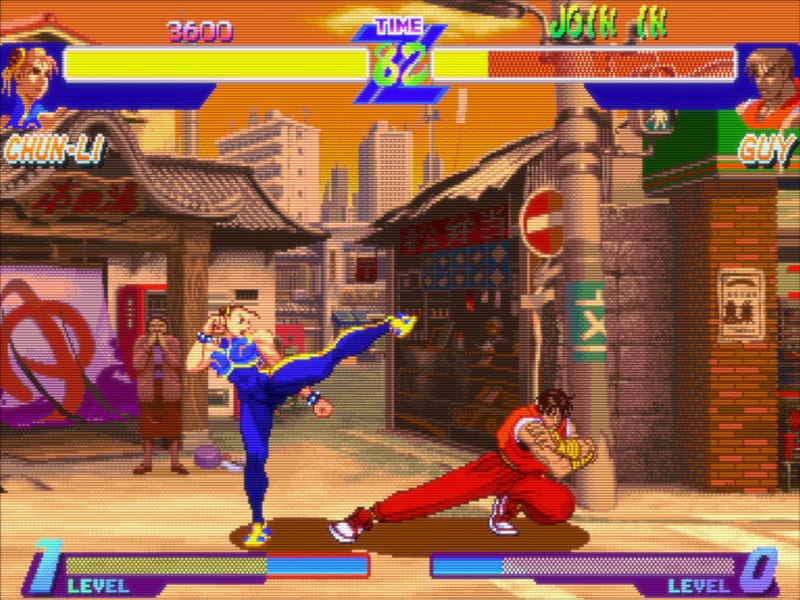
With 1994’s Super Street Fighter II Turbo, the cash cow’s fourth major update, Capcom had taken 1991’s surprise-hit sequel as far as the market would bear. What next? The answer, it turned out, was anime.
Street Fighter Alpha (Zero in Japan) deftly avoided the pressure of following up Street Fighter II by being a prequel instead, catching up with the characters in the interim between the two mainline games. Many of the World Warriors ducked out, replaced with new-old faces from Final Fight (Guy, Sodom) and the first Street Fighter (Adon, Birdie). New fighters Charlie, Dan, and Rose rounded out the cast.
Alpha made a big splash at the time for its cool anime look, quite a contrast to the relative realism of Street Fighter II. It was fun to play too, with smooth action, three levels of super meter, a new counter system, and the introduction of Darkstalkers-like chain combos and mid-air blocking.
But as fun as the novelty was in ‘95, Street Fighter Alpha hasn’t aged too gracefully. The small cast and stage count betray its low budget and brief dev cycle, the balance ain’t great, chain combos don’t add much depth, and most importantly, it was outclassed by a more well-rounded sequel just nine months later. Still, not a bad start for the Alpha series, especially for being developed in six months. — Alexandra Hall
16. Street Fighter II: The World Warrior (1991)
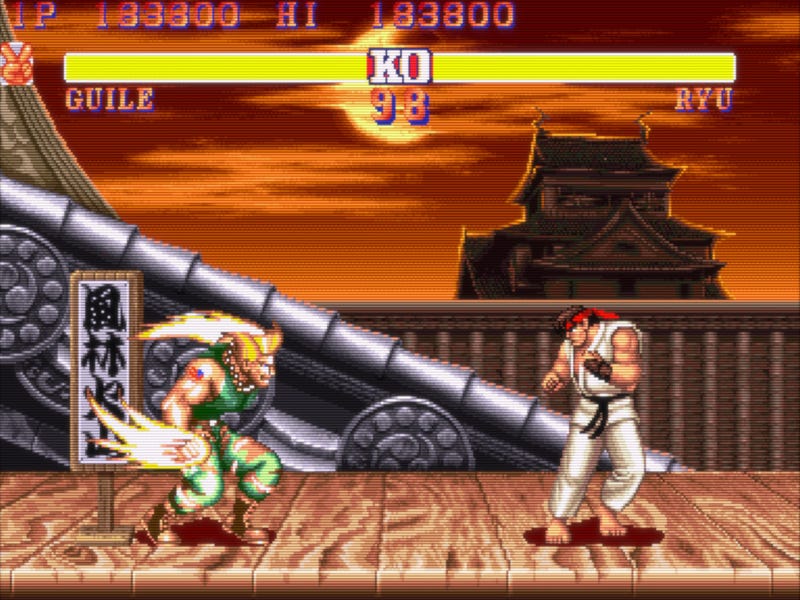
Wow. This is the one that started it all, the spark that caused the fire that totally reshaped the arcade business of the early- to mid-’90s. Street Fighter II: The World Warrior feels like it came out of nowhere, an unexpected sequel to a middling 1987 coin-op few people really loved. But they sure loved Street Fighter II.
If you weren’t there, it’s hard to convey just how huge a phenomenon this game became, creating a whole new culture of people hangin’ out in arcades and 7-11s and literally lining up quarters to reserve turns on the constantly busy SF2 cabs. Loser paid, winner stayed. Those were the rules, and needless to say, arcade operators loved the idea of players forcing each other to buy back in.
A whole new vocabulary arose, many describing concepts heretofore unknown to video games. Cheap. Combo. Meaty. Bread and butter. Mix-up. Anti-air. DP. Broken. Footsies. 2-in-1. Cancel. Negative edge. Flash kick. Poke. Neutral. Tick throw. Sweep. Defensive crouch. Handcuffs. And on and on. As the first modern versus fighting game, The World Warrior offered an unprecedented level of gameplay depth and sophistication, which players around the world were eager to discover, document, and master.
The eight-character roster (seven, really, since Ken and Ryu played near-identically) feels tiny today, but back then, diving into a brand-new genre starting from nothin’, it felt perfect. And every character established in The World Warrior, including the four CPU-only bosses, became mainstays still beloved today. Well, except for those two randos in the intro.
You’ll notice we ranked it somewhere near the back-middle of the pack. That’s because today, The World Warrior feels small, slow, limited, and even a wee bit jank to play. But when it comes to historical relevance, few other Street Fighters come close. Hell, few other arcade games come close. — Alexandra Hall
15. Street Fighter EX (1996)
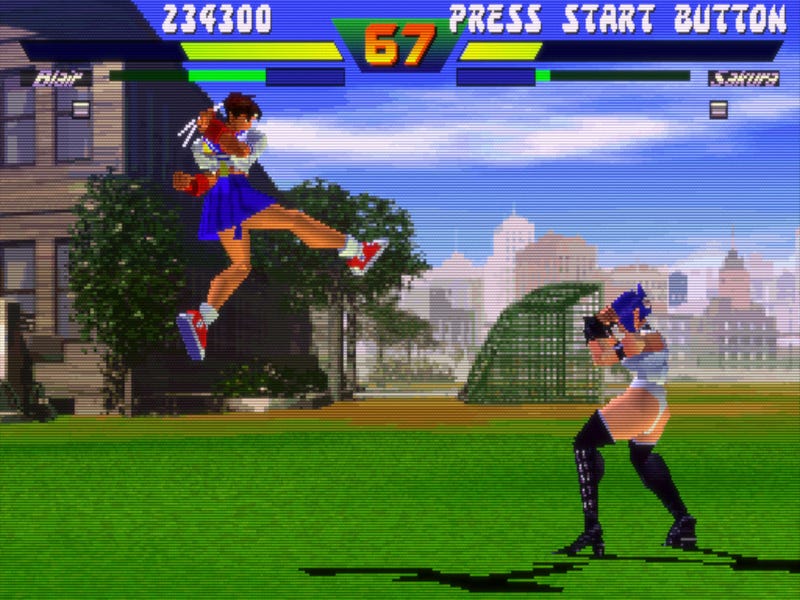
2008’s Street Fighter IV was the first time the mainline series swapped sprites for polygons, but Arika’s Street Fighter EX spin-offs started exploring the third dimension way back in 1996. While they definitely have an off-brand air, the EX games also have a lot to recommend them, and the first chapter got the subseries off to a pleasing start.
That’s less surprising when you consider that Arika was founded by Street Fighter II co-designer Akira Nishitani. His Street Fighter EX combined familiar Street Fighter II characters with a new cast of Arika-made oddballs, like deluded superhero Skullomania, spoiled Arabian princess Pullum Purna, and psychotic ex-military freak Doctrine Dark. The slightly bland Arika designs were an acquired taste, but ultimately brought a lot of new variety to the fisticuffs.
As did the fact that everything was depicted in humble, PlayStation-era 3D. While the Street Fighter EX games looked goofy at times—their 3D prowess was a step below Tekken’s—today I think the chunky polygons and especially the colorful 2D backgrounds of the first two entries look pretty gorgeous on the intended CRT-type display. And the soundtrack! It was impeccable, up there with the best in the entire series.
Despite the polygonal presentation, EX’s action mostly stuck to a 2D plane. One big change was the ability to cancel special moves into supers, which instantly led to a lot of interesting combo possibilities. Fittingly, the PlayStation version, Street Fighter EX Plus Alpha, was the first fighting game with a combo trials mode. Everyone got a guard-break blow too, which consumed meter.
Street Fighter EX was a spin-off done right. It’s now somewhat obsoleted by its more expansive sequels, but still fun to mess with, and a good start to Arika’s 3D subseries. — Alexandra Hall
Revisions:
Street Fighter EX (1996)
Street Fighter EX Plus (1997)
Street Fighter EX Plus Alpha (1997)
14. Street Fighter III: New Generation (1997)
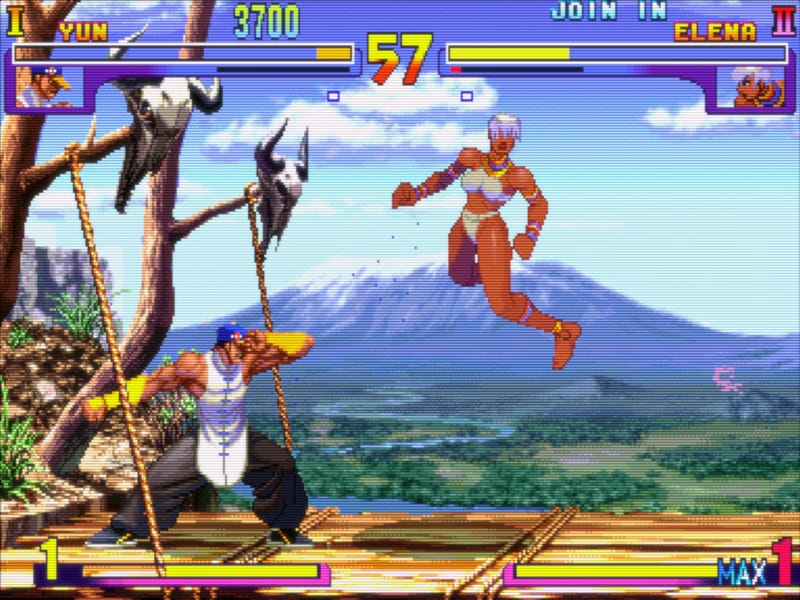
Back in the ‘90s the common joke was that Capcom couldn’t count to three. Then, when Capcom finally stepped up with 1997’s Street Fighter III: New Generation, no one liked it.
Arcade operators hated the expensive new CP System III (CPS-3) hardware, even as it enabled the smoothest, most beautiful sprite animations the genre’s ever seen. The cast was fresh but weird, to a fault; players bemoaned the lack of familiar faces. Balance was poor, and infinites abounded. You could cancel special moves into supers (now dubbed Super Arts), à la the previous year’s Street Fighter EX, and a revolutionary new “parry” system offered the potential to completely change the meta, though even the developers didn’t yet understand that innovation’s true ramifications.
Capcom had finally counted to three, but New Generation’s strangeness, small roster, expensive hardware, and perhaps most of all inchoate roughness all sapped its potential to make the sort of splash Capcom needed. A beautiful start, but it would take a couple more revisions to get the long-awaited third mainline Street Fighter into peak fighting shape. — Alexandra Hall
13. Street Fighter EX3 (2000)
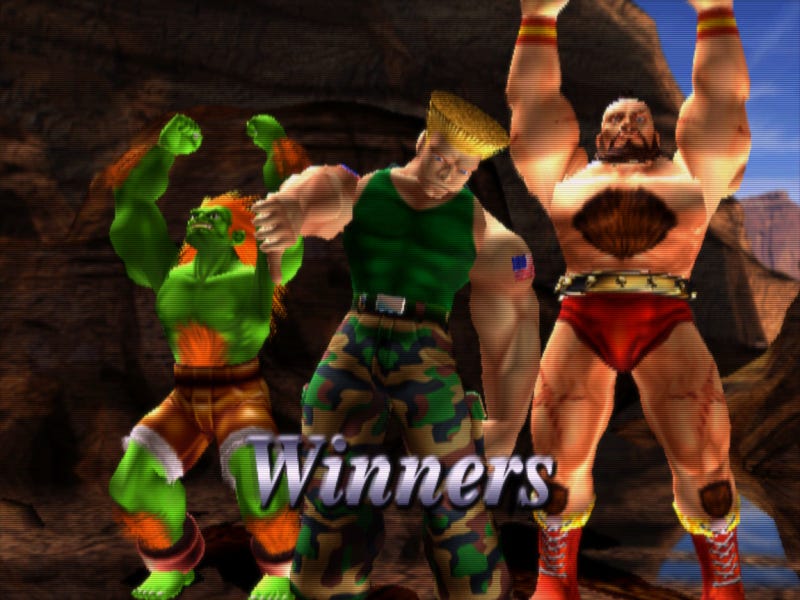
Arika’s third and final (or sixth and final, if you count each upgrade edition) 3D Street Fighter spin-off launched day-and-date with the PlayStation 2 in Japan, and unfortunately, it definitely had a few hallmarks of a zeroth-gen launch title. That’s not to say it was a bad game, but EX3 was not the big improvement fans of Street Fighter EX2 might’ve hoped for.
The 3D lookin’, 2D playin’ action was pretty similar, with the main change being a new tag-team system that let you swap characters on the fly, or even use both at once (amazing name for this: “Critical Parade”). It also went all-in on “dramatic battle”-type scenarios, with up to four players in the fray at once. Fun! Finally, a character-customization mode let you give a generic guy whatever moves you wished, predating Street Fighter VI’s World Tour by some 23 years.
So EX3 had its good points, but there were also essentially no new characters, and a couple didn’t return from the earlier games. The high-res PS2 graphics were terrible, too; forget MvC:I Chun, the Street Fighter crew has never looked so crudely off-model as in EX3. Stages felt bland, and while a lot of the god-tier songs returned, there were few notable new tracks.
Street Fighter EX3 felt kinda rushed, like it was treading water. The unique tag-team gameplay, over-the-top dramatic battles, and create-a-character stuff can still be a lot of fun today, but it’s not the all-around-superior sequel EX2 arguably deserved. — Alexandra Hall
12. Street Fighter III 2nd Impact: Giant Attack (1997)
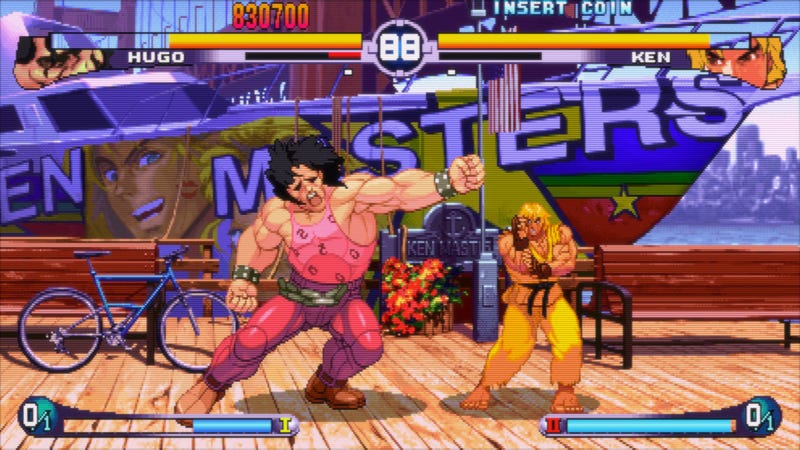
A mere seven months after Street Fighter III: New Generation finally hit, Street Fighter III 2nd Impact: Giant Attack added four new playable characters (the headliners were the giant wrestler Hugo, and the underwear-clad Urien, both freaks in the fine tradition of New Generation), threw in fetching new stages, and rebalanced the cast. It was still gorgeous, still pretty fun, still kind of an infinite-laden cheesefest, and still failed to attract a larger following.
Players lucky enough to encounter 2nd Impact found an enjoyable if still small-feeling game that was still in flux. Among the changes was an unusual down, down, P / K input that activated a new universal overhead attack. More importantly, 2nd Impact introduced Darkstalkers-style EX moves to Street Fighter, whereby you could press two buttons while doing a special move to spend meter and perform an enhanced version of it. Today they’re a mainstay of the series.
Curiously, 2nd Impact has a good claim to being the most beautiful fighting game Capcom ever produced. All editions of Street Fighter III enjoyed silky-smooth animations, but New Generation and especially 2nd Impact featured sumptuous, hand-pixeled backgrounds that were a cut above the comparatively uninspired stages in 1999’s Third Strike, which often relied on pre-rendered elements and generally looked drab.
2nd Impact remains a wonderful showcase of the talent of Capcom’s artists and a great low-res CRT demonstration piece. It’s also the only game in which, bless his heart, Sean got to be high tier. 2nd Impact is an interesting stepping stone on the path to Third Strike, but more a curiosity than a destination. — Alexandra Hall
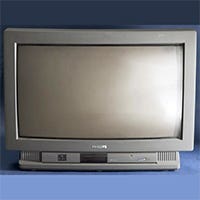
Mystery of the widescreen mode
Strangely, the arcade version of 2nd Impact had a 16:9 widescreen mode, pretty unheard of for standard-definition 2D games. You could enable it in the dip switch menus, and the above screenshot shows it in action. Looks great, huh?
But 2nd Impact is the only game that supports this. And there were no widescreen 2nd Impact arcade cabs, so no one really knows why this option existed, then disappeared. Fans, though, are pretty far along in unofficially hacking widescreen into Third Strike.
Correction 07/22/2023 7:55 p.m. ET: Updated to note that EX moves originated in Darkstalkers.
11. Hyper Street Fighter II: The Anniversary Edition (2003)
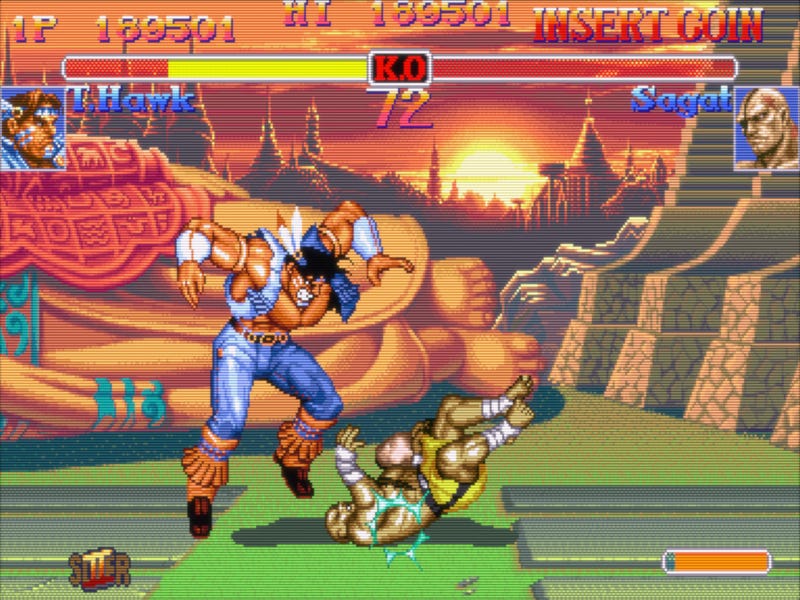
Super Street Fighter II Turbo was the last word in Street Fighter II for almost a decade, but for the brand’s 16th anniversary Capcom put together one last hurrah in the form of Hyper Street Fighter II: The Anniversary Edition, the last-ever CPS-2 arcade game.
Hyper was best understood as a compilation of all five preceding games. After you chose a character, you also had to choose which game’s version of the character you’d play as. The Guile from Super Turbo, for instance, was very different from Guile in The World Warrior.
You might have assumed the newer versions were automatically strongest—since only the Super Turbo incarnations had super moves—but what about busted-ass M.Bison (dictator) from Champion Edition? Yep, he was as nasty as ever in Hyper. And the older-game characters generally did more damage and caused faster dizzies, so there were a lot of factors to consider. There were essentially 65 characters total; not all were viable, but it was great fun to throw them against each other, dream match-style.
This is the part where I say no one plays this version, and it’s true: 1994’s Super Turbo remains the community standard. For good reason, too, as bringing back all the old games’ characters also brings back some silly bullshit (CE dictator, early Guile, etc.). So Hyper’s not nearly as balanced (insofar as Super Turbo can be called balanced), and it also makes some esoteric changes that irritate, such as removing certain characters’ “stored super” tricks. Note to Capcom: Plz don’t fix bugs players actually like.
That said, Hyper Street Fighter II is a great choice when you just wanna casually bust heads with friends. Personally, I just appreciate that it saves me from having to remember the codes to select Old T. Hawk and Old Sagat in Super Turbo. — Alexandra Hall
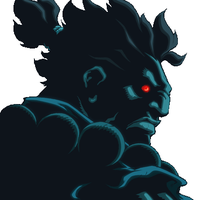
Unhappy anniversary edition
The English version of Super Street Fighter II Turbo is a terrible single-player game, as the CPU opponents are merciless. The Japanese original wasn’t so busted, so it’s commonly thought to be a bug. Is it? Only Capcom knows.
Unfortunately, the uber difficulty is reproduced in Hyper, so don’t expect much single-player enjoyment. Also, 2004’s PlayStation 2 port looks all blurry thanks to running in an interlaced 480i resolution instead of the arcade’s 240p. Bummer!
10. Street Fighter V (2016)
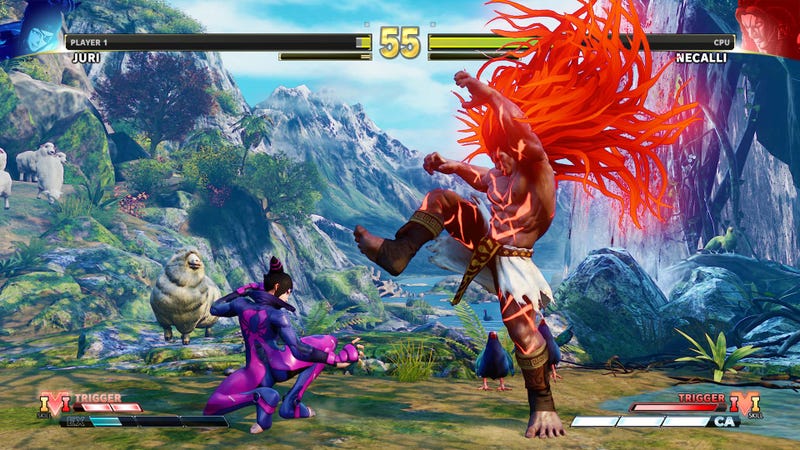
Despite its popularity as a mainline game, Street Fighter V is largely considered a low point in the series due to its poor launch, misplaced focus on esports, and some divisive gameplay choices. As time went on updates brought more features and content such that Street Fighter V eventually became a good, but perhaps not great, fighter.
Part of the problem was it felt like a naked attempt to cash in on the esports craze, launching with a bare minimum of features and particularly neglecting solo modes. Then there was the shockingly high input lag and the surprisingly bad netcode. The new “v-trigger” system gave each character the choice of two potential new comeback-style abilities, but these varied widely in usefulness, and it sometimes felt like characters were inherently lacking something instead of gaining abilities. While on paper v-triggers (and the related, unlimited use “v-skills”) gave players more expression within defined archetypes, in practice they were contentious.
As Capcom added more characters and modes, the gaps were filled and the game got more substance. 2018’s Arcade Edition and 2020’s Champion Edition updates finally helped Street Fighter V feel like a more complete package, adding new modes and content and making changes like giving all characters an additional v-skill and v-trigger. On the single-player front, the A Shadow Falls story mode was one of the first new features that Capcom hyped up, and felt evocative of a cinematic, NetherRealm-style story that featured an ensemble cast and showed the fall of M. Bison. It told an important story, but it was also incredibly mid and stiff compared to the Mortal Kombat and Injustice story modes that inspired it.
I still have some fondness for the game despite its ill-advised rollout and tumultuous lifespan, but mostly I’m glad that we’ve moved on to a bigger and better game in Street Fighter 6. — Kenneth Shepard
Revisions:
Street Fighter V (2016)
Street Fighter V: Arcade Edition (2018)
Street Fighter V: Champion Edition (2020)

Blondes on parade
One of the strangest things about Street Fighter V was how so damn many of its characters had blonde hair. DLC after DLC, the blondes just kept coming. In retrospect, maybe it was to distract us from the fact that Ken had bananas for hair.
9. Street Fighter EX2 (1998)
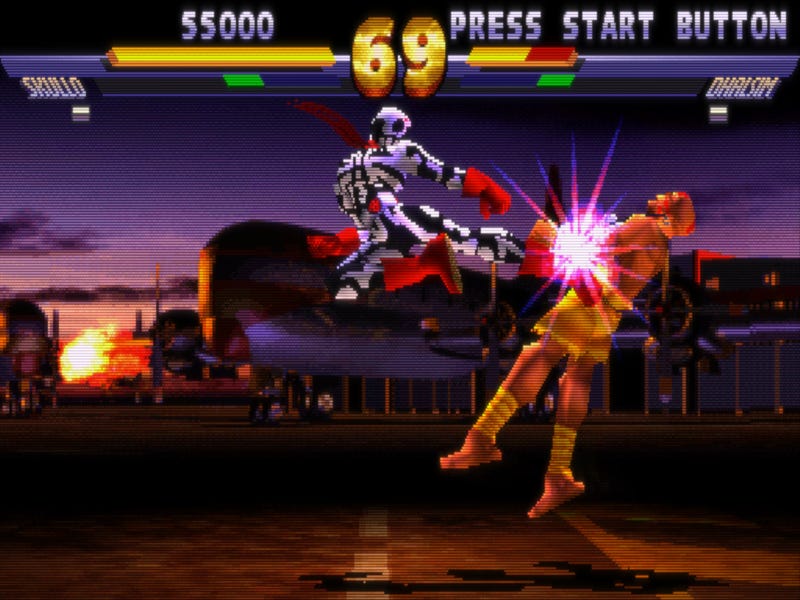
Most players will agree that Street Fighter EX2 was the pinnacle of Arika’s 3D EX subseries. It added a little much-appreciated depth to the first outing’s solid but simple game systems, welcomed some new faces, and continued building out one of the best OSTs in fighting games.
The main gameplay addition came in the new excel combos, which were similar to the “custom combos” from Street Fighter Alpha 2. Spending one meter put you into a brief, special state during which you could chain any attack to any other one to create free-form barrages. While they’re still pretty powerful like in Alpha 2 and Alpha 3, I don’t mind them as much here for some reason. (I guess I don’t take the EX games as seriously.)
On the roster front, Blanka, Sagat, Area, Sharon, Vulcano Rosso, Nanase, Shadowgeist, and Hayate joined the cast. There were a few departures too, but only Sakura and Blair Dame were worth fussing over.
You know how early sequels often hit a sweet spot, when they add enough extras and refinements to the original concept that they finally feel well-rounded and complete? That’s EX2. It’s colorful, easy to pick up, and lots of fun to try and master. Like I said before, the Street Fighter EX games are spin-offs done right. If you enjoy them, Arika’s 2018 Fighting EX Layer for PS4, Switch, and Windows is a neat sort of spiritual successor. — Alexandra Hall
Revisions:
Street Fighter EX2 (1998)
Street Fighter EX2 Plus (1999)
8. Street Fighter II: Champion Edition (1992)
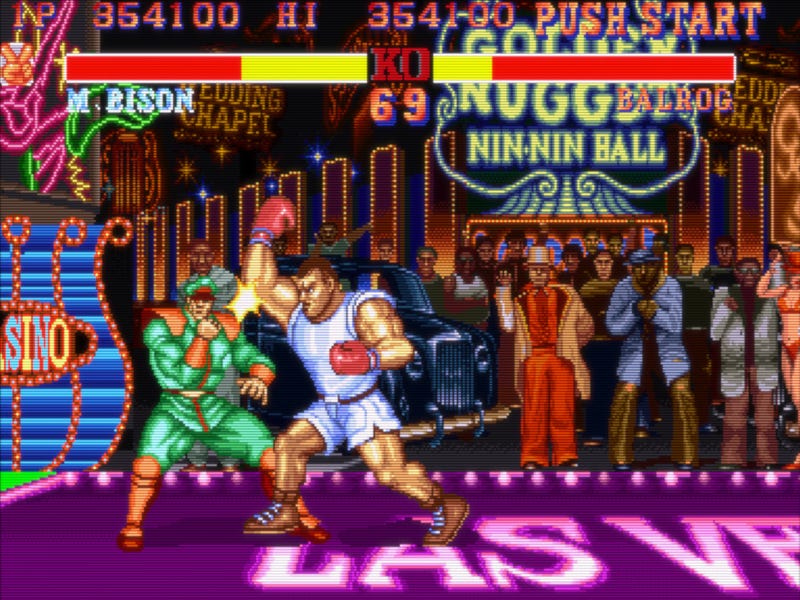
In a franchise that would quickly become the butt of jokes for its seemingly endless procession of ostensibly upgraded new versions, Champion Edition was the first.
Its mission? Capitalize on the runaway success of Street Fighter II: The World Warrior, which it would do by fixing bugs, rebalancing the cast, and fulfilling the wishes of players the world over by finally enabling “mirror matches” and making World Warrior’s four CPU-only bosses into playable characters. Surprisingly, it didn’t add any special moves, though some characters got a new command normal, or had existing ones tweaked. In any case, it was exactly what the market wanted, making Champion Edition one of the best-selling arcade games of all time.
How’s CE as a game? Great, back then. It was a revelation seeing all the Street Fighter characters wearing new colors. Midnight blue Ryu! Pumpkin spice Guile! Alien-ass Blanka and Dhalsim! So rad. Ryu and Ken were finally differentiating, mirror matches took a major stressor out of character selection, and it was wild to finally play as Balrog, Vega, Sagat, and M.Bison, even if they weren’t super well-balanced yet.
CE is either great or outdated now, depending on how you roll. The two CPS-1 versions of Street Fighter II that still draw players are Champion Edition and Hyper Fighting (the upgrade after this one). Which game you prefer sometimes depends on where you’re from, as one or the other was historically more popular in any given country, your local scene, etc.
Personally I came to love Hyper Fighting a lot more, and I find going back to the slower action and limited movelists of Champion Edition stifling. However, Champion Edition seems to be the one many more casual enjoyers remember from back in the day, and as a result it’s often the game you see in modern barcades, etc. If you’re down with the more methodical pace, you’re in good company, and should have little trouble finding others to join in on the fun. — Alexandra Hall
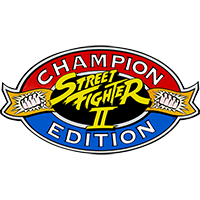
A world without champions?
As Matt Leone chronicled in his history of the series, Capcom didn’t even want to make any Street Fighter II upgrades at first. Imagine if it hadn’t: Capcom would’ve missed out on one of its biggest-ever paydays, not to mention how differently the franchise might’ve developed. Gosh…
7. Street Fighter IV (2008)
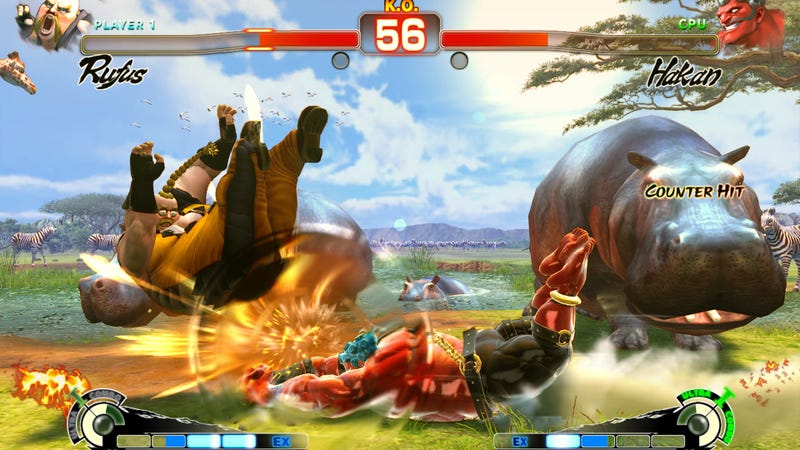
When Street Fighter IV launched in 2008, it had a lot to prove after the series’ nine-year, post-Third Strike slumber.
Street Fighter IV finally took the mainline series into 3D while retaining its signature 2D fighting gameplay. Your mileage may vary on the actual execution of bringing these characters to 3D (I think SF4 looks downright homely compared to its two more recent sequels), but Street Fighter IV managed to capture the precision of 2D fighting with a 3D art style.
It’s big, too. By the time we reached Ultra Street Fighter IV in 2014, we had what was probably one of the most feature-rich fighting games on the market, with a huge roster of 44 playable characters that included many of the series’ most popular faces.
Street Fighter IV’s most significant gameplay addition came in “focus attacks,” which felt like a precursor to Street Fighter 6‘s drive impacts. Holding two buttons charged up a powerful blow that not only had armor, but would crumple the enemy and leave them open to follow-up attacks. You could also cancel these into a dash, and this “focus attack dash cancel“ (FADC) was the basis of most of the game’s more advanced, and perhaps overly difficult, combos. Focus attacks, powerful both offensively and defensively, dominated the Street Fighter IV meta, and how much you enjoy this one might boil down to how cool you are with that.
But the most interesting aspect of Street Fighter IV is how it affected fighting games on a macro scale. They were kinda dead for much of the 2000s until Capcom swooped in and revitalized a genre (and community) that was on life support. The current renaissance can be traced directly back to the explosive popularity of Street Fighter IV, a true comeback king. — Kenneth Shepard
Revisions:
Street Fighter IV (2008)
Super Street Fighter IV (2010)
Super Street Fighter IV: Arcade Edition (2010)
Ultra Street Fighter IV (2014)
6. Street Fighter Alpha 3 (1998)
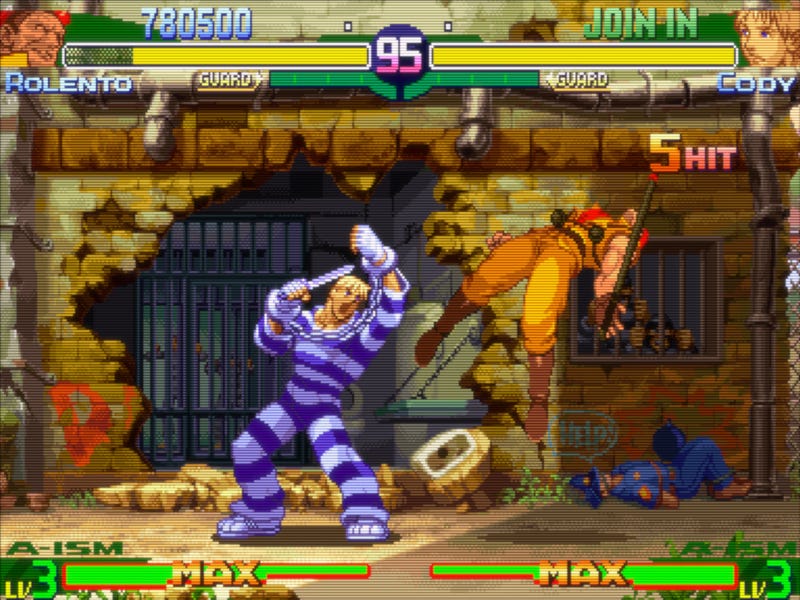
Controversial one. Street Fighter Alpha 3 brought some huge changes to the prequel sub-series, with a much larger cast and a hard-edged new soundtrack and presentation style. But the most earth-shaking difference came in the new “-ism” system, which essentially created three versions of every character.
X-ism was a throwback mode, based on Super Street Fighter II Turbo; X-ism characters got a damage bonus and just a single level-3 super. A-ism was closest to Alpha 2, with air blocking, alpha counters, three levels of super, etc. at the cost of a damage nerf. Finally, V-ism kept those Alpha benefits but did the least damage per hit, and ditched super moves in favor of Alpha 2-style custom combos.
There was a problem: In mid- to high-level play V-ism completely outclassed the other two styles, and also opened the door to tedious, infinite air juggles. Some of the real Alpha 3 sickos love this state of affairs, while other players wish X-ism and A-ism were viable at high levels, too. Funnily enough, 2001 arcade update Street Fighter Zero 3 Upper took some steps to curb V-ism’s dominance, but no one likes to play that version, which has its own flaws.
So here we are, with a game that’s simultaneously beloved or reviled for its extreme imbalance and altered aesthetics, and additionally, often cited for having very good single-player aspects, such as well-done arcade story modes, three-character “dramatic” battles, and the home versions’ popular and influential World Tour mode.
Me, I’ve never been a fan of Alpha 2’s custom combos, so don’t love seeing a game dominated by them! However, Street Fighter Alpha 3 is like a massive sandbox that is what you make of it. If you like the single-player, great. If you wanna hold X-ism / A-ism only tourneys, let me join! And if you’re a true believer who embraces Alpha 3’s full-spectrum chaos, well, no one can blame you for playing the game as Capcom made it. — Alexandra Hall
Revisions:
Street Fighter Alpha 3 (1998)
Street Fighter Alpha 3 Upper (2001)
5. Street Fighter II Turbo: Hyper Fighting (1992)
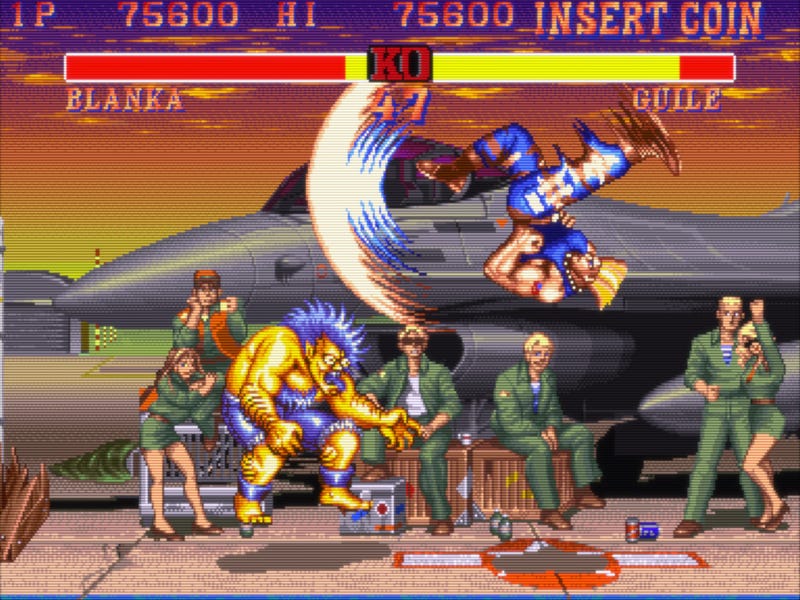
These days we tend to call this game Hyper Fighting, because everyone associates the word “Turbo” with Super Turbo. But this was the original sped-up Street Fighter game, and it changed the course of the series forever.
The funny thing is, it only came about because of pirates creating countless bootleg versions of Champion Edition that let you perform specials in mid-air, switch characters on the fly, and/or that ran at ridiculously fast speeds. Sick of losing money to pirates, Capcom USA convinced Capcom Japan to make its own spicy update, adding the first-ever new special moves, rebalancing the characters, recoloring everything again, and cranking the play speed some 15 percent faster.
Consider the bounty of blessings Hyper Fighting bestowed. In part:
- Chun-Li got her first fireball
- Blanka got his up-ball, E. Honda got his down-splash
- Ryu and Ken’s hurricane kicks went airborne
- Dhalsim got his teleport
These were all iconic additions that lasted the test of time, as was, most importantly, the much faster game speed. Once that genie was out of the bottle there was no going back to the days of more modestly paced fisticuffs*. Capcom itself experienced a rude awakening on this front when it shipped the slow-again, wanly received Super Street Fighter II: The New Challengers the following year.
Alongside Super Turbo, Hyper Fighting is my favorite edition of Street Fighter II because the new special moves tend to feel essential and character-completing, the cranked-up speed keeps it exciting, it has that solid CPS-1 feel, and it’s one of the better balanced in the series. Some of the character-specific tweaks are really nice, too. Blanka and Zangief in particular really enjoyed a day in the sun, and have seldom been so fun to play. (This is the last version of Gief without a 360 throw whiff; it’s all downhill for our Russian pal from here.)
Pity that dictator got nerfed to hell, but you can’t make a Turbomelete without breaking some eggs. — Alexandra Hall
*Unless you’re a CE stan, of course.
4. Street Fighter III 3rd Strike: Fight for the Future (1999)
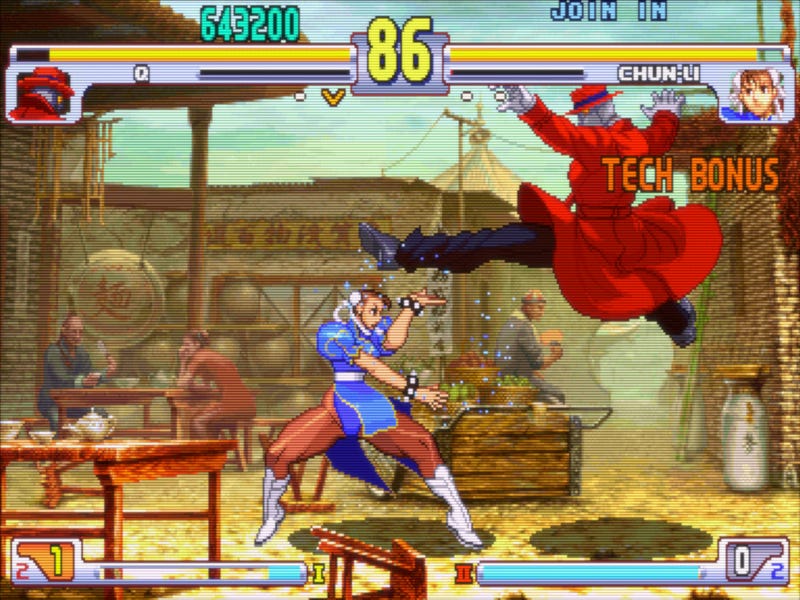
After Street Fighter III: New Generation and 2nd Impact failed to catch the zeitgeist, it took another year and a half for Street Fighter III 3rd Strike: Fight for the Future to give the threequel its final shape. Five more characters joined: three more weirdos, plus the beloved combo of returning star Chun-Li and new karate girl Makoto. Balance still sucked (says the long-suffering Q / Hugo player), and the new stages were uglier. A revamped parry system offered greater flexibility, throwing and universal overheads got rethought for the better, taunts actually became kinda important, and a fresh new hip-hop style permeated the presentation. Capcom finally had something!
Nope. Only the hardcore noticed. 2D arcade fighting was close to peaking if it hadn’t already, and the genre started its slow slide into the coming dark age. But ironically, it was this very lack of ongoing development over the next half-decade that finally let Third Strike start to build momentum among the fighting faithful, who continued playing and studying it like medieval monks transcribing ancient manuscripts in cloistered monasteries. And we all know how that culminated in 2004: with perhaps the most hype moment in competitive fighting game history.
How much you like Third Strike depends on how down you are with parries, because they change everything. Traditional Street Fighter zoning gets radically deemphasized in favor of in-your-face offense, and sticking out errant buttons can lead to sudden, devastating punishment. Thinking ‘bout those parries 24/7 isn’t for everyone, nor is the highly stratified tier list.
But if you’re down with the weirdness—and these days, the game has legions of enthusiastic fans—Third Strike offers a unique flavor of high-intensity 2D fighting all its own. While it was too unusual and difficult to become a traditional commercial success, I think many will agree it was a creative and artistic one, and bold at the very least. — Alexandra Hall
3. Street Fighter 6 (2023)

Street Fighter 6 is beautiful to look at and enjoys an abundance of style, but it’s never at the expense of substance.
The core fighting game is sublime. The rollback-based netcode is superb. Some of the new faces have become instant icons, and it makes veteran fighters feel fresh again by filling out their kits with new tools. The central drive gauge system makes certain strategies and maneuvers like parries and attack cancels universal, allowing Capcom to open up more design space by tying roster-wide tools to a single resource. It also helps to avoid Street Fighter V’s problem of often feeling like a waiting game. Tired of getting backed into a corner by your opponent’s neverending combo? Drop a well-timed drive impact and start a combo of your own.
Where Street Fighter V was divisive, a game made for only the most competitive players, Street Fighter 6 makes an earnest attempt to bring people together, celebrating the best parts of the series while making it more approachable to newcomers who might feel intimidated by fighting games. An optional ”modern” control scheme makes it easier to pull off powerful attacks without the need for complex inputs, with damage nerfs keeping things fair for OGs still using the traditional, ”classic” controls. The training modes, too, are some of the best ever seen, guiding new players into the fold with confidence.
Street Fighter 6 also has a much greater focus on the single-player content that Street Fighter V felt so disinterested in.
The RPG-esque World Tour story mode is incredibly ambitious. You create a custom fighter and run around a Yakuza-style map, fighting civilians and meeting the game’s main cast to seek their tutelage. While World Tour’s far from perfect, it’s satisfying to use its incredibly extensive character creator and make your own street fighter, then hone their playstyle over time as you meet new teachers.
My favorite part of World Tour is its (fictional) social element. Some really excellent, funny writing humanizes the Street Fighter heroes in ways most fighting games don’t. They could have gone the Street Fighter V story route of trying to emulate NetherRealm’s campaigns, but instead, we got something far more charming. Plus, I got to flirt with Ryu. It rules.
As of this writing, Street Fighter 6 is still very early in its lifecycle. It just launched in June, and while there is a DLC roadmap, we still don’t know how the sixth numbered entry’s legacy will eventually play out. But unlike SFV, Street Fighter 6 feels like it’s for everyone, and everyone, so far, is loving it. I think its future’s looking pretty bright. — Kenneth Shepard
2. Street Fighter Alpha 2 (1996)
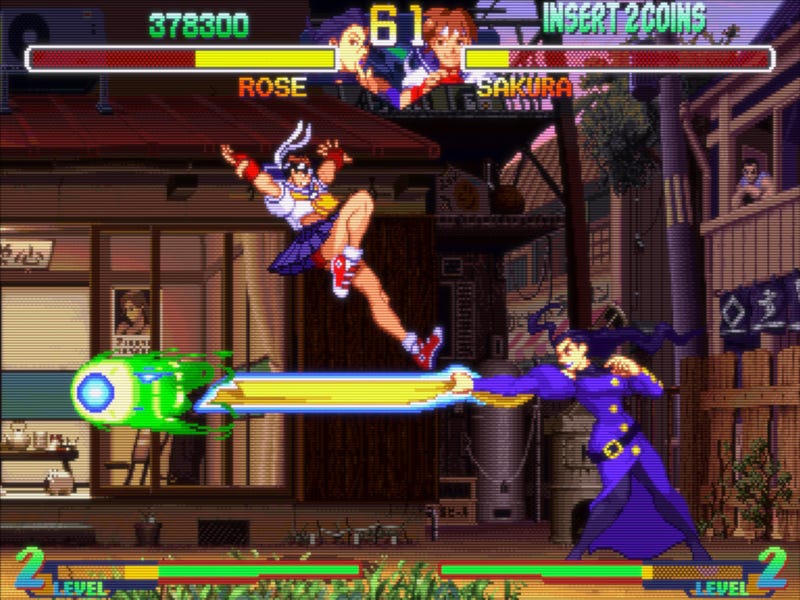
As enjoyable as it was at the time, Street Fighter Alpha: Warriors’ Dreams was clearly unfinished. Only with Street Fighter Alpha 2, which debuted a mere eight months later, did Capcom’s anime-themed prequel series come into its own.
With Alpha 2 the base playable roster increased to a more comfortable 18, with some additional secret character variations hidden behind codes. Street Fighter II mainstays Zangief and Dhalsim joined the cartoony fray, as did military freak Rolento from Final Fight and the highly technical Gen from ye olde Street Fighter le first, both bringing original styles new to the series. The final fresh face, in her debut appearance, was one Sakura Kasugano, the vivacious schoolgirl who idolized Ryu. Combined with the returning Alpha players, this made for a superb cast.
On the gameplay front chain combos were out, everyone got a second alpha counter, and “custom combos” were the major new addition. Instead of spending your meter on super moves you could choose to drain it all at once to unleash free-form, rapid-fire chaos on your foes. As you’ve probably gleaned from prior entries, I don’t love custom combos, and in Alpha 2, their often severe, hard-to-avoid damage definitely steers the high-level meta.
But you know what? I deal with it, because Alpha 2 plays like a dream, smooth and fast. It’s well balanced, approachable for newcomers, and offers plenty of depth for vets. There are so many fun characters to master—I currently enjoy dabbling in Rose, Zangief, Sodom, Rolento, and even Birdie, seen here before his insulting Street Fighter V makeover—and the game’s gorgeous in every way, from sprites to stages to music. Capcom took a bit to rev up, but here it finally started firing on all cylinders.
Street Fighter Alpha 2 is one of the finest representations of classical 2D Street Fighter, and one of the games I most enjoy returning to today. It’s a class act, with few real flaws. — Alexandra Hall
Revisions:
Street Fighter Alpha 2 (1996)
Street Fighter Alpha 2 Gold (1996)
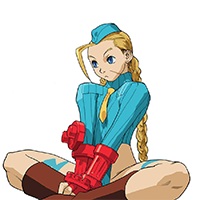
Cammy infiltrates Alpha 2
By far the most unlikely Alpha 2 home port was the 16-bit SNES version, which came on a massive 32 megabit (4MB) cart and, thanks to iffy programming, suffered lengthy pauses before fights.
Also, the later, less common Street Fighter Alpha 2 Gold revision had no less than 12 hidden characters. Most were just variations on the normal cast, but one was the Shadaloo version of Cammy!
1. Super Street Fighter II Turbo (1994)
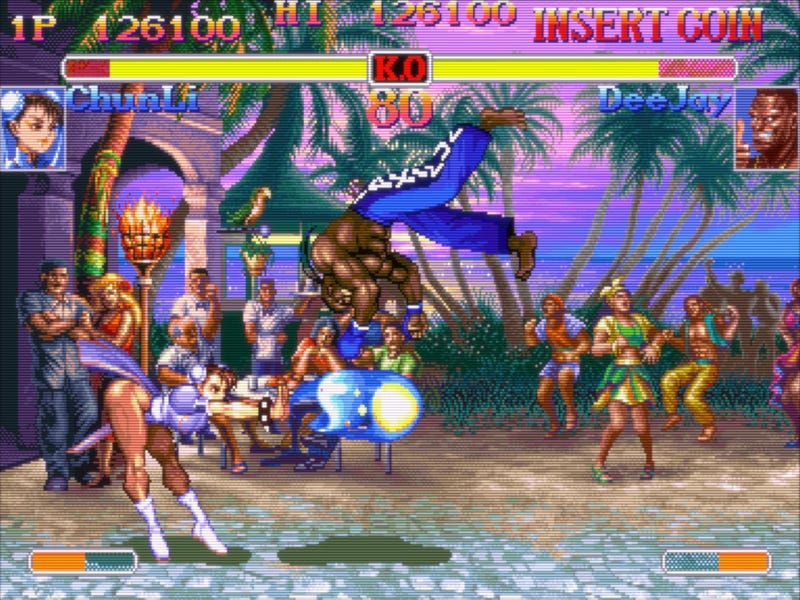
Yep, Super Turbo takes the Street Fighter crown, at least in our book. Truth be told, this is highly subject to personal opinion, and I think any of the top six or seven games in our rankings could easily be number one for someone else. Perhaps for you…and that’s cool. Since Super Street Fighter II Turbo is our top pick, I’ll try to convey why it rules.
For starters, it ended up being the ultimate evolution of Street Fighter II, the single most important fighting game the genre’s known. Capcom made two more attempts to follow up Super Street Fighter II Turbo, but as you’ve perhaps read by now, they had their own issues. This is the entry that stuck, and the one everyone still enjoys today.
Super Turbo was the logical culmination of the journey Capcom started in 1991, incorporating everything its designers learned from The World Warrior, Champion Edition, Hyper Fighting, and even the underwhelming Super into one final, excellent game. It also brought its own innovations, like meter-fueled super combos, throw softening (“teching”), and even rudimentary air juggling.
Characters, too, gained crucial moves that completed their movesets. Imagine Fei Long without his chicken wing, Ryu without his advancing fierce and overhead, Chun without upkicks, Gief without green glove, Honda without oicho. (You don’t have to, because Super exists.) The character balance wasn’t perfect, but was good enough to create consistently fun match-ups, and it was exciting when someone went on a streak with a low-tier like Cammy or T. Hawk.
(And let’s not forget series mainstay Akuma debuted here, becoming the first tournament-banned character in FGC history.)
All of the above, combined with the return of Hyper Fighting’s blessedly fast action, worked together to create short, intense matches largely devoid of gimmicks, instead focused on the 2D fighting basics of neutral, footsies, and zoning. Super Turbo was both fun as hell, and an excellent teacher of fighting game fundamentals.
When I play Super Turbo with a similarly skilled opponent today it’s like we’re engaged in an alternate form of communication, a hidden language composed of attacks and retreats, reads and feints. Sometimes words aren’t needed, because our hands are saying everything through the screen. I’m always chasing that mental “zone” feeling in video games, and at its best, Super Street Fighter II Turbo gets me there like few others.
While I’ve played and enjoyed most of the Street Fighter games, Super Street Fighter II Turbo is the one I’ll always go back to. I hold it in the same esteem as Doom, Super Mario Bros. 3, R-Type, Dark Souls…masterpieces that always remain relevant, and always have more to offer. — Alexandra Hall
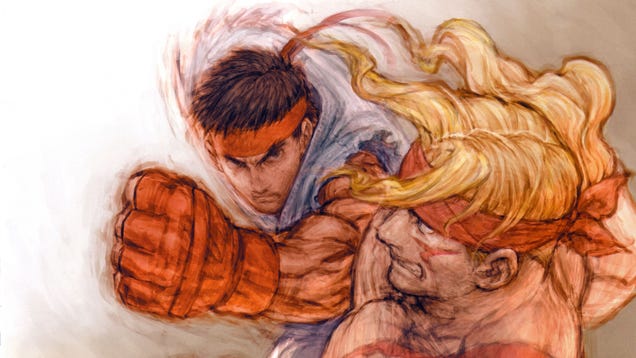
Leave a Reply